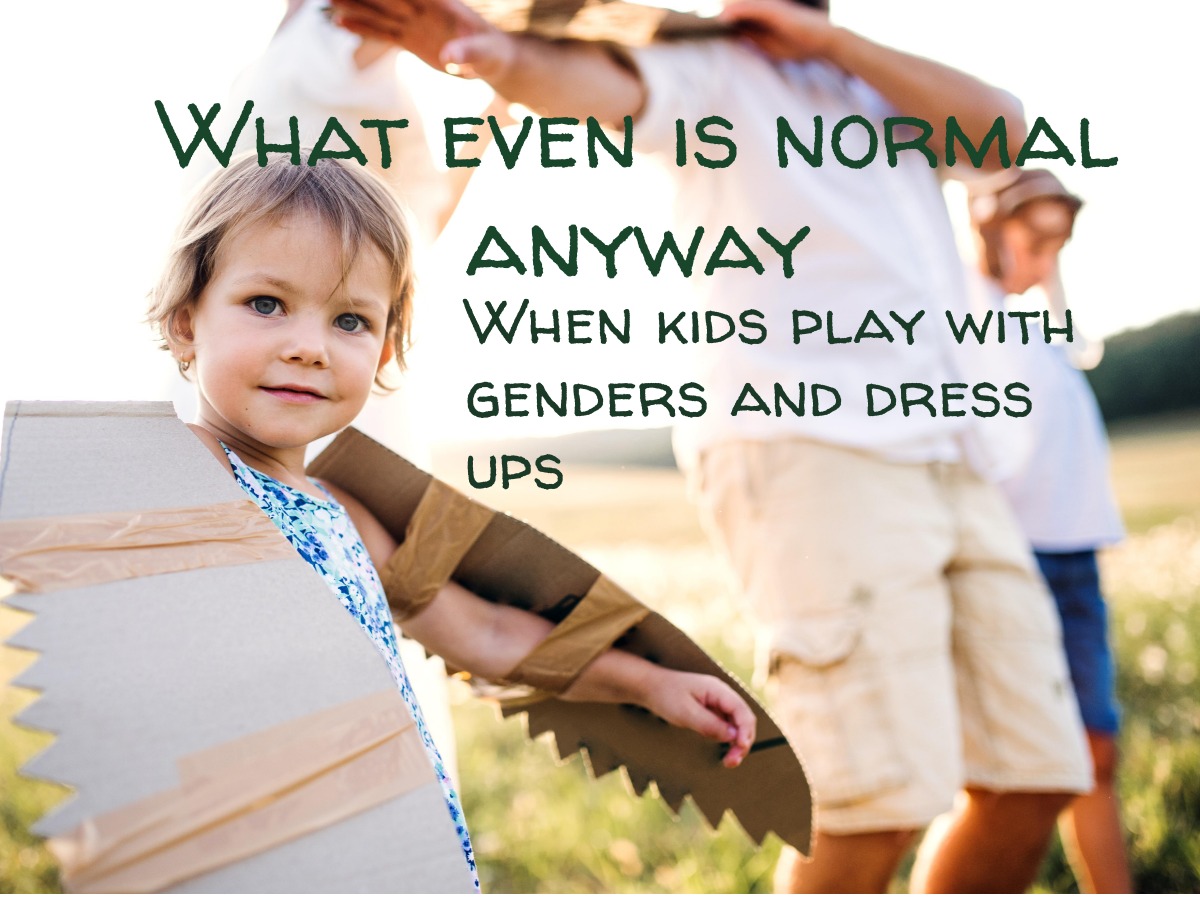What even is normal anyway? When kids play around with genders and dress ups
At least once a year a parent expresses concern to me about the fact that their child likes to play with items that adults attribute to a different sex. In other words, their son likes dressing up as Elsa or their daughter wants to wear a hard hat and hammer things. I reassure them that it’s a natural part of their development and helps them assimilate the world around them. But what are they really asking? What it boils down to, is they want to know if their child is normal. And I wonder, instead of answering this, should we actually be asking a different question? What do you think is normal? Let’s interrogate that!
What’s normal is for parents to worry about their children.
What’s not normal is some of the things parents find themselves worrying about.
Public safety, online safety, exposure to drugs, exposure to porn, bullying, self-harm, an excessive penchant for junk food, an aversion to food altogether, diving in shallow water, scissors, choking on billions of small items, whether the education system prepares them adequately for the modern world, keeping up with their peers on social media, their future prospects, what state the world will be in when they’re older, trampolines – these are all fairly standard concerns.
But navigating gender roles and identity when your child is playing dress up shouldn’t be a worry. If it is a source of concern it may have more to do with us being adults and imposing our conditioned response about what constitutes being male and female onto young children who are happily oblivious to fixed ideas about these constructs at this stage. In other words, your real fear might be how it reflects on you.
This is understandable. Although discussion and acceptance surrounding gender identity has increased in recent years, it can have some people assuming that more exposure to this sort of language and narrative can make children more likely to seek out alternative options and identify with a gender that is different to their sex at birth. I’m not going to argue on that one, but I will say, these are just children. All they’re interested in doing is having fun.
So my advice? Relax. Let them dress up. Let them role play. And talk to them about what they enjoy about it. Trying on a different role helps them work through feelings and know more about themselves. Because they don’t know who they are without also figuring out who they are not.
It might go on for minutes, hours, days, months or years. I know several children who continue to style themselves differently into primary school, or until it gave way to the routine of having to wear a school uniform, think the Goth phase, the tomboy etc. Perhaps none, one or a few of these children will turn out to be LBGQTA in later life. But playing dress up as a child is hardly a predictor. Some who don’t play dress up will turn out to be LBGQTA too!
At the end of the day, children find pigeonholing as limiting as we do. Agonising over what we are or what we are not distracts us from the possibilities of what we can do. And if we ever need inspiration for that, just look to the current Olympics where Harry Garside, is bucking norms left right and centre. The lightweight boxer from Australia is a plumber by trade, does ballet, and even painted his fingernails to compete in this years Summer Games. But most of all, he is a champion.
